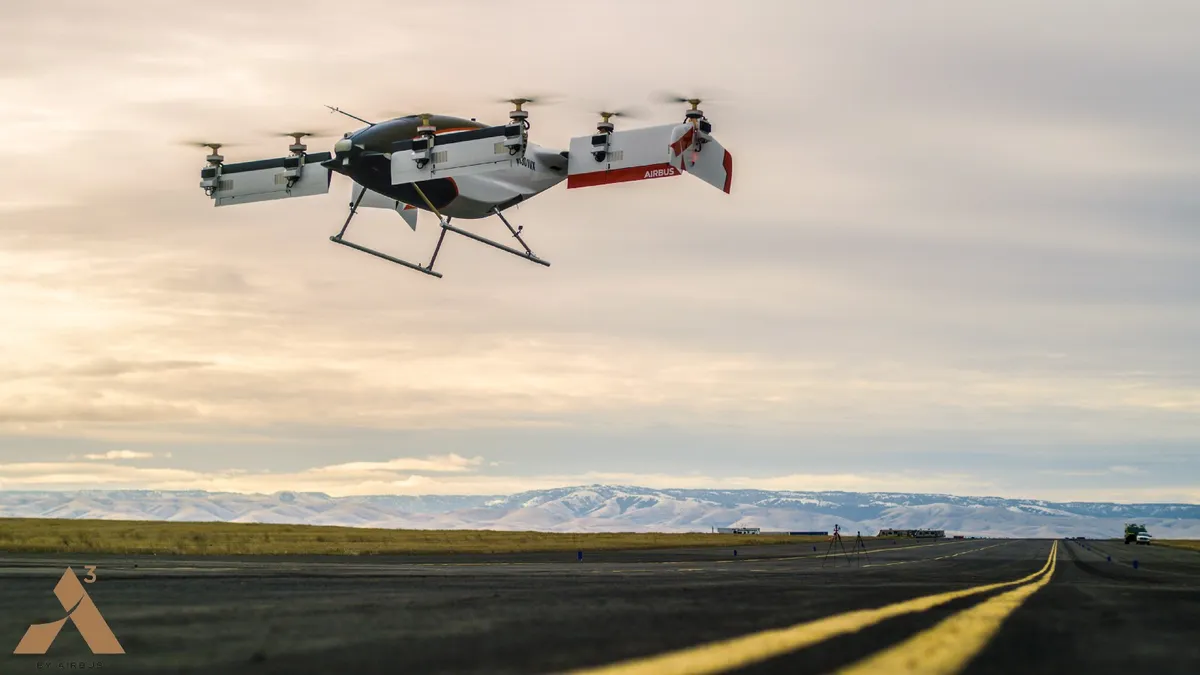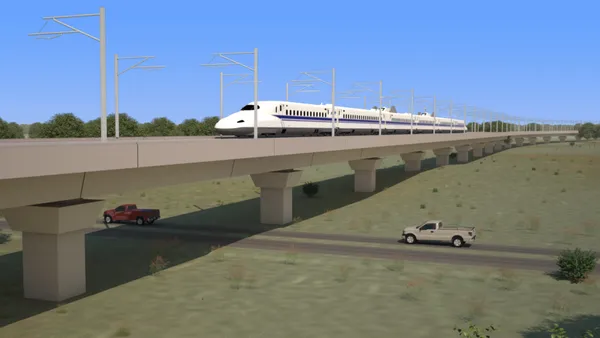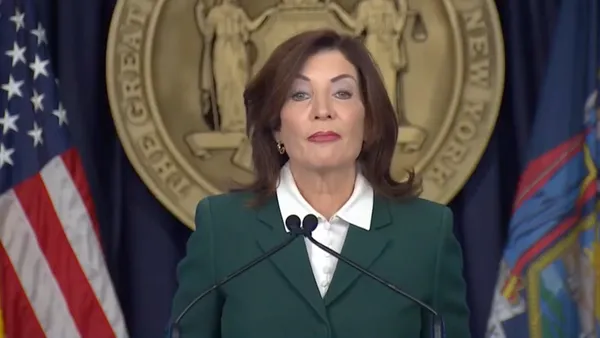Dive Brief:
- A³ by Airbus announced the first successful flight of Vahana, its electric vertical take-off and landing vehicle (VTOL). On Jan. 31, the aircraft — known by the company as Alpha One — flew five meters high and then descended safely. The self-piloted flight lasted 53 seconds, and a second flight was completed later that day.
- "Our goal is to democratize personal flight by leveraging the latest technologies such as electric propulsion, energy storage, and machine vision," Vahana project executive Zach Lovering wrote in a post on the project’s website. "Our first flights mark a huge milestone for Vahana as well as the global pursuit of urban air mobility."
- Lovering said more flight tests will continue for Vahana, while the company has also chosen California-based MAGicALL as a new partner for its motors. MAGicALL designs and builds "custom, cutting-edge components," Lovering wrote.
Dive Insight:
A 53-second flight by a flying taxi five meters into the air and then safely down again represents a significant step in the development of the technology. Aviation giant Airbus has spent more than two years on this project, which indicates concrete progress after the likes of Bell Helicopter showed off what flying taxis could be like in augmented reality at CES in Las Vegas earlier this year.
Flying taxis could help alleviate congestion on crowded city streets, if people become less reliant on traditional cars and ride-hailing apps and start to take to the skies to make trips. But if the technology really takes off, it could put even more of a strain on already-struggling city taxi firms that saw their profits eaten into by Uber and Lyft, while those same apps could see their business impacted with greater competition.
City leaders must think about the risks of having taxis flying among skyscrapers or other tall buildings, which could be disastrous if it goes wrong. The technology to prevent such crashes and keep flying taxis away from tall buildings will need to be foolproof or else we could see major disasters. Already, Uber is testing its uberAIR service in Los Angeles and Dallas — two cities with plenty of skyscrapers and major landmarks — so lessons learned there could be broadly applicable elsewhere.
And where will the flying taxis land and take off from in cities? Some cities are looking at replacing on-street parking spots with reserved pick-up and drop-off areas for Uber and Lyft, and city leaders would likely need to experiment with similar take-off and landing areas to ensure the taxis have enough space to do everything safely.











